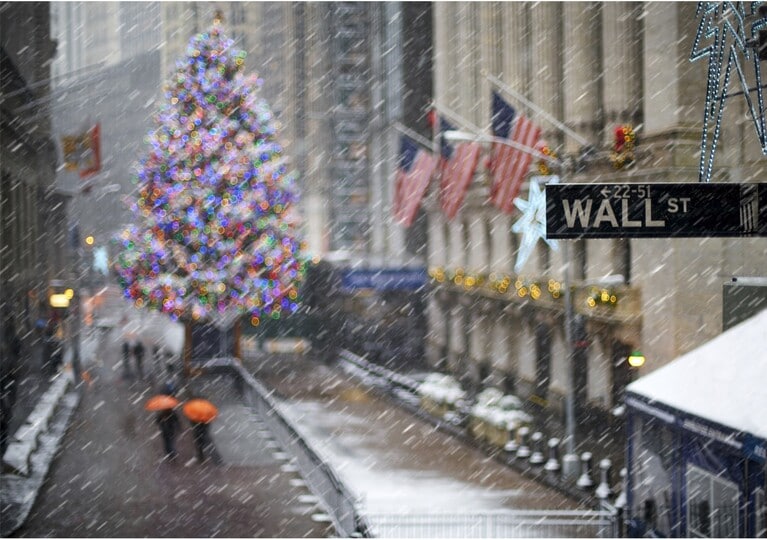It’s been a challenging two years for the food retail sector, having to face the challenges of the pandemic, upsizing their delivery capabilities, as well as wrestling with the complex nature of supply chain disruption due to staff shortages, higher costs as well as product unavailability.
Not only that we’ve seen Aldi and Lidl continue to grow their own market share, at the expense of the big four of Tesco, Sainsbury, Asda and Morrisons.
We also shouldn’t forget the contributions of the likes of Waitrose, Iceland and the Co-op to the overall picture.
In terms of share price performance 2021 has been better for both Sainsbury and Tesco shareholders, with Tesco paying a 50.93p special dividend in February, as well as consolidating its share capital.
The sector has also been boosted by M&A speculation having seen Asda acquired by the Issa brothers for £6.8bn at the end of last year. This was followed this year by Morrisons which fell into private hands a couple of months ago after a lengthy bidding war, as it was acquired by private equity firm Clayton, Dubilier and Rice, for the sum of £10bn, and 287p, which was a 61% premium to the share price, from when the bidding war started. Old Tesco boss Sir Terry Leahy was amongst one of the advisors on the CD&R bid.
The £10bn price tag did raise a few eyebrows given that Morrison has the smallest market share of the big four supermarkets at 10%, down from 10.3% a year ago, according to Kantar World Panel.
If we look at the share price performance of Tesco and Sainsbury this year has been decent, although it’s also been long overdue given how poorly the both have performed since 2018, while they have also had to contend with a new player in the mix in the form of Marks and Spencer and their tie up with Ocado which has started to reap a significant dividend.
Share price performance - 2021

Source: infinitetradingpocket
This year we’ve seen Sainsbury share price hit levels last seen back in 2018, when its ill-fated Asda deal was first mooted, on reports that private equity firm Apollo was having a look at the business, as it became apparent that they were likely to miss out on the Morrisons deal. This is a significant turnaround from March 2020 when the Sainsburys share price hit a record low.
Over the years there has been intermittent interest in from other external parties who appear to see value in the business, but who have been reluctant to take it further, but who already have sizeable stakes already.
Czech billionaire Daniel Kretinsky is one such shareholder, increasing his stake in the business over the past few months to just shy of 10%. A few years ago, there was also speculation that the Qatar Investment Authority, might make a bid, and who are currently the biggest institutional shareholder with a 15% holding, although this is down from its peaks of just over 20% a few years ago, with Kretinsky the main buyer. The Qataris were also supportive of the failed Asda deal, and might welcome a reasonable bid from an interested third party.
Ultimately any prospective buyer will need to convince that they have a credible plan to improve the fortunes of the business. That could prove a significant hurdle to overcome, although everyone has their price, and it remains to be seen what that price might be. Given Sainsbury’s size relative to Morrison it certainly won’t be cheap, with any potential deal set to come under the same gaze of the Competition and Markets Authority that blocked the Asda deal.
Since those August peaks the shares have slowly slipped back, and while business has remained good investors seem unconvinced despite a decent set of H1 numbers back in November.
This saw grocery sales rise 0.8% versus a year ago, when comparatives were extremely tough due to the surge in sales due to lockdowns. Compared to 2019, the numbers showed a 9.1% rise.
As far as general merchandise is concerned the picture was less positive, with sales down 5.8%, but were still higher than the same period in 2019 by 1.1%.
Digital sales remained strong coming in at £5.8bn with underlying profit before tax of £371m, a rise of 23% on last year, and more importantly the business remains on course for full year underlying profit before tax of £660m.
CEO Simon Roberts was slightly more cautious about the challenges facing the business going forward, pointing to the challenges over logistics, but confident that the measures were in place to navigate their way through them for best possible Christmas. Nonetheless Sainsbury has lost market share from a year ago, slipping back to 15.4%, from 15.7%, while Tesco has seen its market share rise from 27%, to 27.7%
Marks and Spencer have been by far the best performer, although it can’t really be considered a food retailer in the real sense of the word due to its large general merchandise division, however they are probably more alike now given that both Tesco and Sainsbury’s have much larger general retail and clothing ranges. It has been notable that Sainsbury’s TU range has grown quite considerably from where it was a few years ago.
In terms of market share, according to Kantar Worldpanel, Tesco still remains the market leader at 27.7%.
While Tesco has remained steady, in terms of market share, it is noticeable that both Sainsbury and Asda are lower than a year ago, while Morrison has consolidated its fourth position at 10%.
Aldi has remained in 5th place but has managed to gain ground this year, rising from 7.4% to 7.9%, while Lidl has improved from 6.1%, to 6.4% as both budget retailers ramped up their store opening programs.
In terms of overall sales all supermarkets have seen their sales increase this year, with frozen food in particular being a significant outperformer, with Iceland especially reaping a benefit, even though it only accounts for 2.3% of the UK grocery market.
Starting with Tesco, the UK’s number one supermarket has been able to consolidate its reputation as the UK’s biggest supermarket by a continued focus on costs, as well as scale.
Last year it announced the disposal of its Thai and Malaysia businesses for $10.8bn with £5bn of that paid out to shareholders by way of a special dividend in February. The company also announced the sale of its Polish business for £165m.
Despite rising costs and the tough comparatives from 2020 when a lot of people shopped online the company’s H1 update showed a 2.6% rise in group sales excluding fuel to £27.3bn, up from £26.7bn the year before.
Operating profits also rose by over 40% to £1.46bn, while profits before tax rose to £1.1bn, from £551m from the same period a year ago.
This is a simply stunning performance, which saw the supermarket raise its full year profit expectations kicking the shares sharply higher, although they still remain well below the levels they were pre-pandemic, though most of that is down to the special dividend payment effect.
Retail free cash flow, which fell to £ 797m in 2020, is expected to rise to between £1.4bn to £1.8bn by the end of this financial year, and continue to do so year on year, while expectations for adjusted retail operating profits were revised up to between £2.5bn and £2.6bn, even with an expectation that current sales levels fall away.
There were some weak spots, namely in the Ireland operation which saw sales drop by 2.6%, while its Booker operation showed a big improvement of 11% as restaurants, cinemas and bars reopened.
Tesco Bank also returned to profit contributing £433m in revenue and £72m in operating profits.
Over the last 12 months, the sheer scale and diversity of the Tesco business, now under the stewardship of CEO Ken Murphy, has meant that the business has cemented its position as the UK’s number one supermarket. Even the rise of the likes of Aldi and Lidl haven’t been enough to eat into its position as the market leader, with Tesco’s Aldi Price Match proposition taking the fight directly to the new kid on the block.
When looking at Ocado, we have to look at in the context of how Marks and Spencer have performed, and from the respective performance of the share prices, M&S has come out this year very much as the clear winner.
After a great 2020 Ocado has seen a reversal of fortunes this year, one of the worst performers year to date on the FTSE100, with the jury still out as to whether it can be viewed as a retailer, or a technology provider. Despite the share price weakness this year, it still has a higher valuation than both Sainsburys and Marks and Spencer combined.
Last year Ocado penned a £750m deal with Marks and Spencer to deliver an initial range of 4,400 food products, along with 700 from the M&S lifestyle range from the beginning of September 2020.
We have seen the benefits of this deal in its quarterly revenue numbers, however the progress on last year has still been disappointing.
The most recent Q4 numbers saw revenues fall from last year, coming in at £547.8m, a fall of 3.9% from a year ago, which when added to the £1.8bn generated in the previous 9 months puts total revenues for 2021 at £2.36bn, a modest increase to last year’s £2.3bn.
This is despite an overall capacity improvement with average orders per week higher, however average basket size has declined falling 12% to £118, as more people go out to shop than stay at home.
Ocado has had to deal with labour shortages holding back sales growth, along with higher costs, which management said would add another £5m to its cost base. In terms of the outlook for 2022, the retailer is confident about its sales growth prospects, saying it expects it to be at the upper end of 10% to 15% of its existing guidance.
There has been talk in recent weeks that Ocado could find itself the target of a takeover bid from Marks and Spencer, although this would only apply to its retail business, which it already owns a 50% stake in. This would make sense for M&S which has seen a huge turnaround in its fortunes this year, with sales through Ocado accounting for 27% of total sales.
This would allow Ocado to focus on its logistics business which is where the real growth opportunities lie, and which saw it acquiring Kindred Systems and Haddington Dynamics, two companies that specialise in robotics manufacture for a combined $287m, in 2020 as it looks to streamline the picking functions in its automated fulfilment centres, in order to improve efficiencies.
Ocado takeover stories are certainly nothing new, however this could be one to keep an eye on for 2022.
2021 has been a much better year profits wise for food retail, and with all the chatter about takeovers and acquisitions 2022, could well see further changes in a sector, which is grossly undervalued.
Morrisons and Asda have already gone into private hands, with the wider question being whether we see further interest in Sainsburys and whether someone might even feel compelled to have a nibble around Tesco.
Supply chain considerations notwithstanding costs are likely to be a key consideration for all retailers in 2022, along with increasing pressure on margins, against a backdrop of rising inflation





